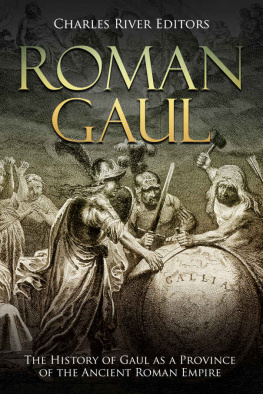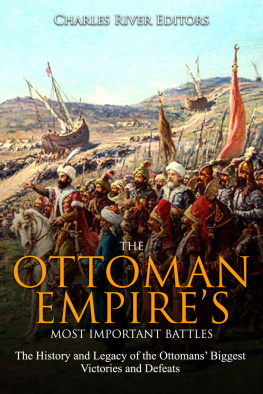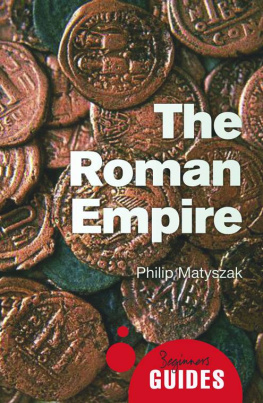Charles River Editors - Roman Arches: The History of the Famous Monuments in Rome and Throughout the Roman Empire
Here you can read online Charles River Editors - Roman Arches: The History of the Famous Monuments in Rome and Throughout the Roman Empire full text of the book (entire story) in english for free. Download pdf and epub, get meaning, cover and reviews about this ebook. year: 2020, publisher: Charles River Editors, genre: Religion. Description of the work, (preface) as well as reviews are available. Best literature library LitArk.com created for fans of good reading and offers a wide selection of genres:
Romance novel
Science fiction
Adventure
Detective
Science
History
Home and family
Prose
Art
Politics
Computer
Non-fiction
Religion
Business
Children
Humor
Choose a favorite category and find really read worthwhile books. Enjoy immersion in the world of imagination, feel the emotions of the characters or learn something new for yourself, make an fascinating discovery.
- Book:Roman Arches: The History of the Famous Monuments in Rome and Throughout the Roman Empire
- Author:
- Publisher:Charles River Editors
- Genre:
- Year:2020
- Rating:3 / 5
- Favourites:Add to favourites
- Your mark:
- 60
- 1
- 2
- 3
- 4
- 5
Roman Arches: The History of the Famous Monuments in Rome and Throughout the Roman Empire: summary, description and annotation
We offer to read an annotation, description, summary or preface (depends on what the author of the book "Roman Arches: The History of the Famous Monuments in Rome and Throughout the Roman Empire" wrote himself). If you haven't found the necessary information about the book — write in the comments, we will try to find it.
Roman Arches: The History of the Famous Monuments in Rome and Throughout the Roman Empire — read online for free the complete book (whole text) full work
Below is the text of the book, divided by pages. System saving the place of the last page read, allows you to conveniently read the book "Roman Arches: The History of the Famous Monuments in Rome and Throughout the Roman Empire" online for free, without having to search again every time where you left off. Put a bookmark, and you can go to the page where you finished reading at any time.
Font size:
Interval:
Bookmark:
By Charles River Editors

The Arch of Titus

Charles River Editors provides superior editing and original writing services across the digital publishing industry, with the expertise to create digital content for publishers across a vast range of subject matter. In addition to providing original digital content for third party publishers, we also republish civilizations greatest literary works, bringing them to new generations of readers via ebooks.
Sign up here to receive updates about free books as we publish them , and visit Our Kindle Author Page to browse todays free promotions and our most recently published Kindle titles.

A relief depicting the conquest of Jerusalem on the Arch of Titus
Some of the most iconic symbols of the Roman Empire that have survived into the modern world today are the arches that Romans erected to commemorate military victories and glorify individual emperors. The story of how arches came to be used throughout the Roman world in such a way is one that involves the evolution of the military and its leaders into the political forces that came to dominate the state, and those arches, along with the triumphs that came to be associated with many of them, were key parts in the process of exhibiting the might of both Rome. At the same time, they were meant to mark the individual achievements of Romes rulers, making them an enormous and expensive PR exercise that steadily grew over the years.
At its most basic, and in its earliest incarnation, the arch was a celebration of achievement and, as such, was part of a whole series of methods used by the Romans to record, reward, and publicize success. However, as the imperial period progressed, the arch came to symbolize much more and became exclusively associated with imperial might through the building of triumphal arches. The story of those arches is inextricably linked to the promotion of Rome as the greatest of all powers, and of its leaders as the most worthy and able of all commanders.
Triumphal arches in Rome provided a centerpiece for triumphs that were restricted to the emperors and their immediate families after the establishment of the Roman Empire, but arches in the wider empire did not have this specific function. That said, as with those in Italy, foreign arches were strategically placed to ensure they were seen and passed through by the maximum number of people, subjecting them to scenes depicting Roman victories on a regular basis. These arches were inextricably linked to promoting Rome as the greatest of all powers, and also bound up in the policy of Romanization and assimilation of conquered territories and populations.
Of course, these arches have intrigued historians for years. Franz Botho Graef, a German classical archaeologist and art historian, a prominent expert in the area, devoted his life to the identification and cataloguing of Roman arches. He documented 125 extant arches, and 30 further examples discerned from the literature or other sources, scattered throughout Rome and its provinces. Graefs listing is usually taken as the starting point for subsequent researchers, but another eminent historian in the field, A. Frothingham, has disputed Graefs listings, arguing that only 115 of the 125 identified arches actually existed. He also claimed to have identified 280 further monuments and arches, the majority of which were located within Asia Minor, North Africa, and Syria. However, this methodological approach introduced a new category monuments - into the cataloguing process, which has only served to complicate the debate.
The building process of arches was long and protracted, but it typically served the empire well. Indeed, the success of this physical statement can perhaps be best measured by the number of similar arches erected around the world centuries after the end of the Roman Empire, including the Arc de Triomphe in Paris, the Narva Triumphal Arch in Saint Petersburg, the Wellington Arch in London, and the India Gate in Delhi.
Roman Arches: The History of the Famous Monuments in Rome and Throughout the Roman Empire examines the events surrounding the celebrations, accounts of them, and how the arches influenced other architectural monuments. Along with pictures depicting important people, places, and events, you will learn about Roman arches like never before.
The Roman Empire was essentially a military state, and the army came to play an enormous part in the political life of the nation. Emperors often rose and fell on the whims of the legions, and no emperor could survive for long without the armys continued support.
The process by which the army came to play such a prominent role in politics is complex. One of the key factors that can be identified is the way in which military success was celebrated, rewarded, and used as a political tool. This system developed over many years, and gradually the rewards and celebrations became more and more connected to the leadership of an army rather than individuals or individual units. Thanks to this development, the whole purpose of such celebrations changed dramatically, with the emphasis becoming more on imperial image projection and legacy.
Roman arches have intrigued historians for many years. One of the most prominent specialists was Franz Botho Graef (1857-1917), a German classical archaeologist and art historian who taught at the University of Jena from 1904-1917 and devoted much of his life to identifying and cataloguing Roman monuments, particularly arches. His work is still the starting point for any exploration of arches in the Roman Empire.

Graef
Graef identified 125 extant arches and 30 further examples that were known through literature or other sources. It might be thought, therefore, that determining which arches to consider when analyzing the role of the arches in the celebration of military success and their connection to how emperors promoted, displayed, and immortalized their own victories would be relatively straightforward. However, the identification of these ancient arches is not so simple. Professor of History at Princeton University Arthur Frothingham (1859-1923), another well-known specialist in the field, vigorously disputed Graefs listings. He claimed that only 115 of the 125 identified by Graef existed, with the difference being explained by duplications and errors in identification. He revised Graefs figures, listed 280 extant monuments and arches, and estimated there may have been as many as 500, most of which were located in North Africa, Asia Minor and Syria. The additions to Graefs lists were based on his analysis of epigraphical material, numismatics, and literature.
The starting point for any analysis of the right numbers is the army itself. In the early days of Rome, the troops were all citizens between the ages of 17 and 46, and they were called up for short periods. During this period, the primary function of the army was to defend the city of Rome from marauding enemy tribesmen, including Gauls, Etrurians, or Samnites, so there was no need for long campaigns or a military body trained in attack. As Rome developed and became more expansionist, however, the structure of the army had to adapt to meet the requirements of this new type of aggressive warfare that required troops to be away from home for longer and longer periods. Small landowners became increasingly reluctant to be away from their land, especially at key points in the agricultural year such as harvest and planting times, yet those times tended to coincide with the best campaigning weather. Consequently, the army had to move away from the concept of a citizen army to a full-time professional force.
Font size:
Interval:
Bookmark:
Similar books «Roman Arches: The History of the Famous Monuments in Rome and Throughout the Roman Empire»
Look at similar books to Roman Arches: The History of the Famous Monuments in Rome and Throughout the Roman Empire. We have selected literature similar in name and meaning in the hope of providing readers with more options to find new, interesting, not yet read works.
Discussion, reviews of the book Roman Arches: The History of the Famous Monuments in Rome and Throughout the Roman Empire and just readers' own opinions. Leave your comments, write what you think about the work, its meaning or the main characters. Specify what exactly you liked and what you didn't like, and why you think so.



















